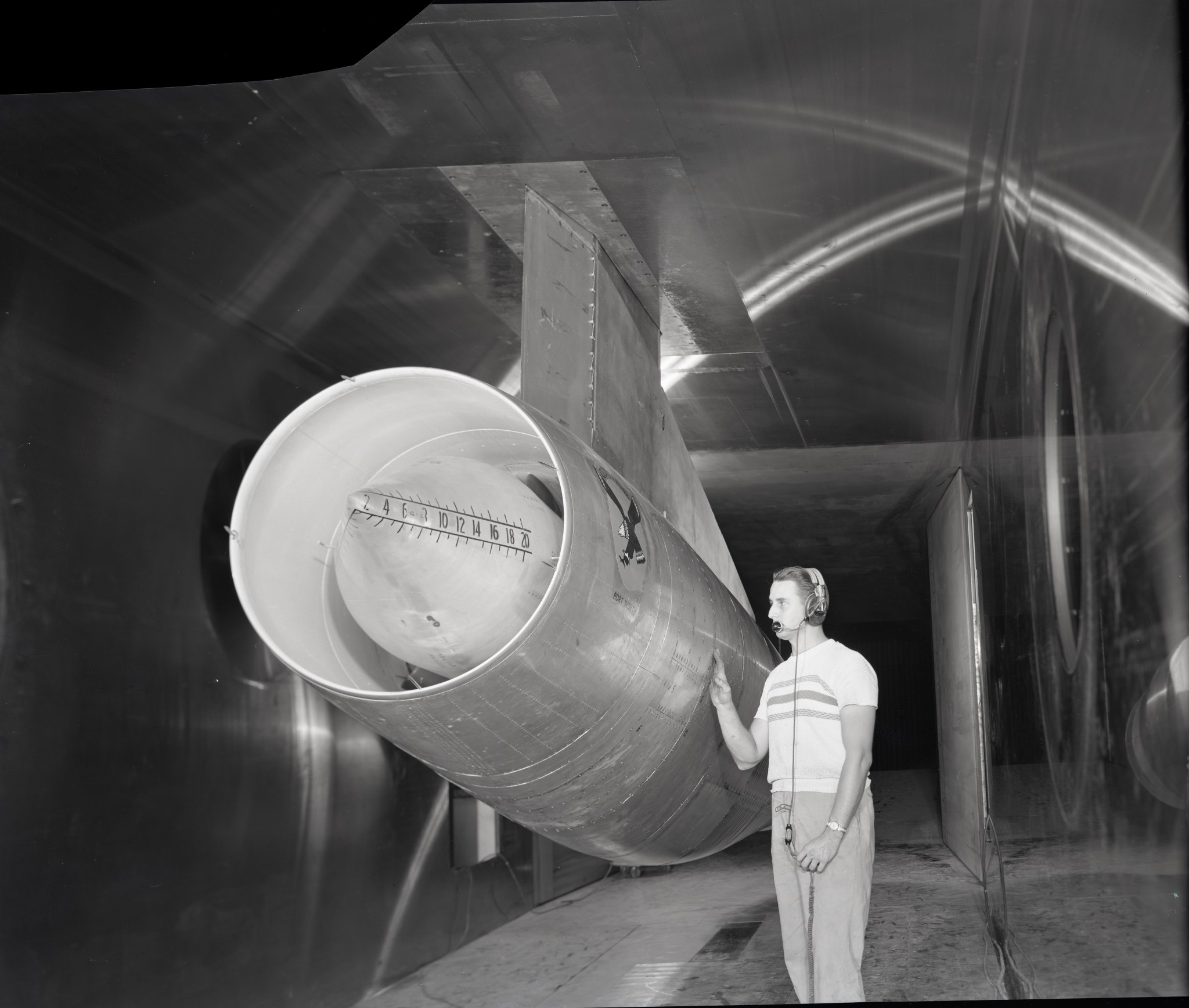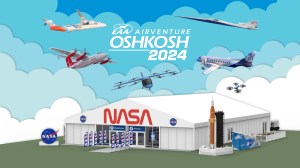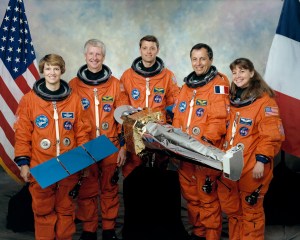In September 1956, the NACA Lewis Flight Propulsion Laboratory began a critical test for the world’s first supersonic bomber, the Convair B-58 Hustler. The testing of the engine inlet system in the 10-by 10-Foot Supersonic Wind Tunnel was a crucial step leading to the B-58’s first flight. The investigations were the first in the lab’s new facility, which became operational only months before.
In 1952, the military contracted Convair to design a bomber for the Strategic Air Command that could cruise long distances and then rush into enemy territory at supersonic speeds to drop its nuclear payload. The resulting B-58 incorporated new technologies such as delta wings, an area rule fuselage, and variable-geometry inlets for its four General Electric J-79 engines.
Variable-area inlets use a moving—or translating—spike that automatically adjusts the inlet geometry for optimal efficiency throughout the flight. At low speeds the spike retracts into the nacelle to allow more air intake. The spike moves forward during supersonic flight to slow the air flow before it enters the compressor.
Convair needed to verify that automatic inlet control worked in conjunction with the J-79 before attempting to fly the aircraft. A failure would stall the engine at supersonic speeds, causing the aircraft to react violently. Although small-scale testing of the system had been performed, Convair sought to test a full-size production version. Lewis’ brand-new supersonic tunnel was large enough to accommodate the hardware.
The 10 x 10 testing, conducted in September and October 1956, included both inlet/engine and inlet/exit plug configurations at Mach 1.8 and 2.0 and at various angles of attack. The program led to significant changes in the inlet control system and gave Convair confidence that the engine could withstand unstable shock waves. This ultimately reduced the amount of flight testing required for the new aircraft.
Afterwards, Convair’s Robert Widmer wrote, “The smooth and efficient execution of this test would be a credit to your lab in any case. But considering the newness of the facility and complexity of the model, it seems really remarkable to us that the test was carried out so successfully.”
The first flight of the B-58 Hustler took place on November 11, 1956, just weeks after the conclusion of the 10 x 10 testing. The Hustler went on to break numerous speed and altitude records, and the Strategic Air Command operated two units of B-58s throughout the 1960s.
Top Image: The Convair B-58 Hustler was powered by four GE J-79 turbojets, each producing 15,600 pounds of thrust.

































